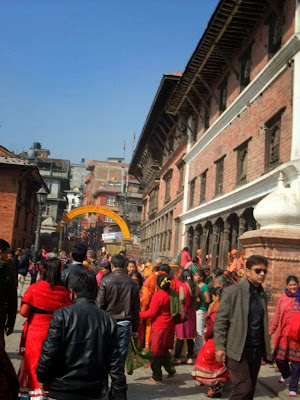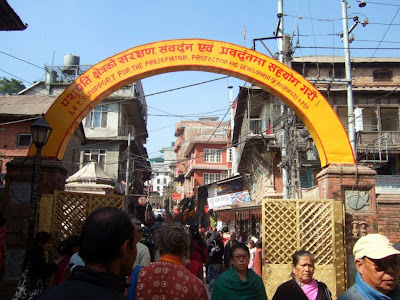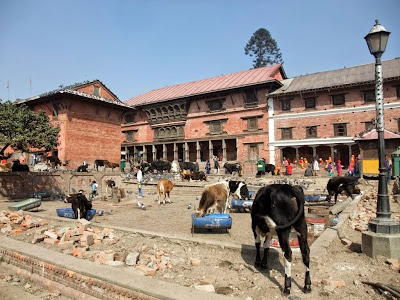
Pashupatinath situated on the bank of Bagmati River in Deopatan Village about 5km away north west of Kathmandu, is a sacred destination for almost all Hindus. It is dedicated to the national deity of Nepal, Pashupati who is the manifestation of Hindu God Shiva. Hinduism believe that Pashupati is the Lord of all beings and source of eternal bliss and peace. The 23 meters high Pashupatinath temple is a two storey pagoda built on a single tier plinth at the center of the town among many other old temples and shrines. Its 4 gilt and silver plated doors are richly ornamented with various sizes of gold painted images of guardian deities in the niches on both sides.


Bagmati River that runs next to Pashupatinath Temple is also considered as very sacred. Many bathing spots (Ghat) that lined up along the bank are to be used by Hindu pilgrims only. It includes the main cremation site Bhasmeshvar Ghat and royal cremation site Arya Ghat which was established in early 1900s. The bathing spot named as Gauri Ghat towards the northern end, was meant for women only. Across Bagmati River are the 15 votive shrines where people enshrined "Linga" in memory of the deceased persons between year 1859-1869.



The remarkable architecture of the 15 votive shrines, Pandra Shivalaya, that lined at the bank of Bagmati River.



Pashupatinath is famous far beyond Kathmandu Valley. Thousands and thousands of pilgrims flocked in each year to pay homage.



Temple Pashupatinath stands as a symbol of faith, religion, culture and tradition in the nation. It was uncertain when was it first established. Traditional saying is that it began to exist in 3rd century but historical records only showed up to 13th century. The present temple was believed to be restored in year 1697 under the reign of King Bhupalendra Malla.



Legend of Temple Pashupatinath:- God Shiva was once absence from the midst of the gods and manifested into the form of an antelope frolicking in the forest at the bank of Bagmati River. Other Gods when found him, wanted to bring him back. When they seized him by the horn, the horn broke into 3 pieces in which one soared into the sky, one dived into the earth and the piece which was in the hands of the Gods was taken away by them. It was said that the Gods placed the broken piece of horn on a mound at Gokarna as a sign of the Lord. Ages later, the divine horn piece rose from the mound and flied to settle permanently at the spot where the Jyothirlinga today stands. The piece that was buried underground was unearthed in a form of Jyothirlinga by a cowherd when he found that one of his cow always spilled milk on this particular spot.


Temple Pashupatinath houses the sacred Jyothirlinga which is the holy symbol of Shiva. The phallic idol enshrined in the sanctum surrounded by a narrow ambulatory, has four images carved on its four sides. It measures one meter in height and believed to be self appeared.



The gold gilt colossal image of Shiva's nandi Bull, seated with composure on its four legs with eyes fixed on Lord Pashupati, is placed in front of the west gate.



It was said that whoever came here and beheld the "Linga "would not be reborn in animal realm. Unfortunately, we were not allowed to enter as The Temple is forbidden for non-Hindus.



The priests of Pashupatinath are called Bhattas and Mool Bhatt is referred to its chief priest who only answerable to the King of Nepal.


The Bull yard and devotees' cleansing place before entering into the temple.


Bulls are sacred animal in Nepal and are normally set free at open yards like this until they naturally passed away.


Sincere devotees were getting the five offerings for Lord Pashupatinath which include (1) Water from River for bathing the idol before worship (2) Cow milk to drip over him through a tiny hole of a round container hung over him (3)loose apple leaves (4)flowers or fruits (5) beads strung on yellow thread.



Offering baskets can be big or small in size.


Religion related items, attractive puppets and the natural color pigment were the major items sold at the little stall along the walkway towards Bagmati River site.



The paintings hanging outdoor by the side of the walkway became the brightest backdrop to our pictures.



Way back to town.


No comments:
Post a Comment